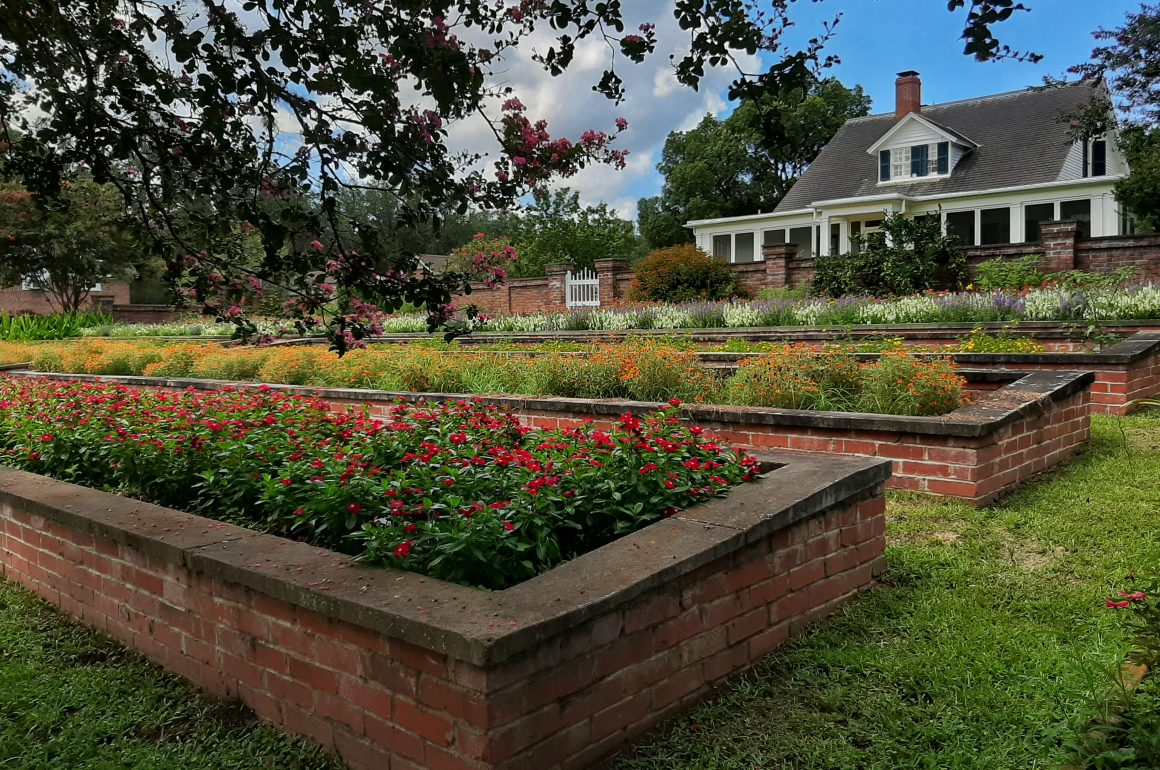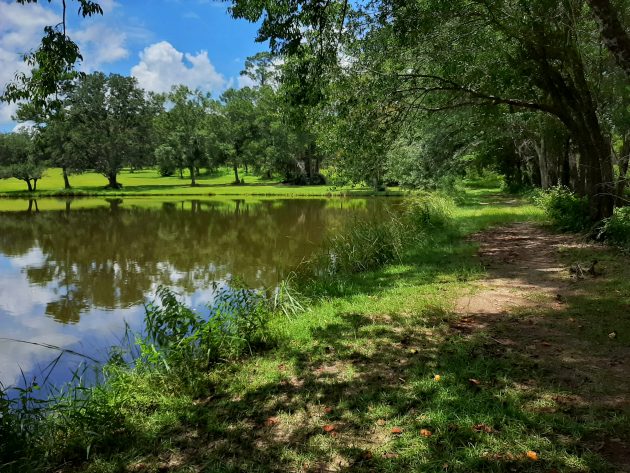
I didn’t expect to see any birds.
It was over 90 degrees F on a Georgia afternoon, the humidity adding an extra dose of discomfort. In a rare afternoon to myself, I had driven across the Florida/Georgia border to pick up a few things in a nearby town (curbside + social distancing), and discovered a historic estate, open to the public, along the road on my way back. Opportunities to explore are harder to come by these days, so I turned into the parking lot.
Pebble Hill Plantation used to be exactly that, a plantation. At the end of the 19th century, buyers from the Northeast purchased the land, and turned it into a sporting estate – common in the red hills of North Florida and South Georgia. During cold winters, the hunters retreated to the south, intent on quail and other game species.
The buildings from the original plantation all fell or burned down, replaced by sweeping brick stables, an enormous brick mansion, an assemblage of cottages, and other buildings. Because of COVID-19, I did not venture into the visitor’s center, and the museum was closed, so that’s essentially all I know. While I can hope that this historic site does not merely skip over the plantation history, I won’t know until the coronavirus epidemic eventually passes and I can see the interior of the buildings.
But for just over $5, I could walk around the grounds as much as I wanted. Due to the heat and what I assumed is a summer off-season in general, I had the place all to myself.
Setting off across a wide field, I made a slow circle around a glass-calm pond. Red-headed Woodpeckers chattered to each other as they flew from tree to tree, and I marveled at just how many I spotted. They are uncommon, and to see three or four together was a rare treat. Red-bellied Woodpeckers and Eastern Bluebirds rounded out the species near the pond, but in the distance I noted a Red-tailed Hawk, as well as the regular calls of a Northern Bobwhite. Though I had only walked around for a few minutes, I could already tell how birdy the estate really was.
Down a dirt lane bordered by Southern Magnolia trees, I leaned over a fence to watch two mules feeding quietly, then followed the road to a white-paneled house, complete with pink Azalea bushes by the front door. An Eastern Towhee sang in the distance, but I felt more excited about the calls of an Eastern Wood-Pewee – my first of the year.

The mansion itself was magnificent. I am also from the Northeast, and seeing architecture that reminded me of New York and Connecticut and even my home state of Maine beneath southern Live Oaks and Magnolias felt a bit odd. But I liked it.
Discovering gorgeous terraced gardens in front of a small cottage, I sat beneath a pink Crepe Myrtle tree to watch Ruby-throated Hummingbirds chase each other from blossom to blossom. Between working from home, a baby, and a global pandemic, I don’t get out much, and I felt sincere appreciation for each and every species. I’ve said it before, but I’ll say it again – after we go back to “normal,” whatever normal becomes, I hope I retain this appreciation for the places and wildlife I see everyday, not just the unique or rare varieties.
Over the hour and a half I explored, I could easily imagine myself as the owner of the vast estate, as there was no one around to interfere with my ruminations. With plans to order an annual pass, I also imagine that more birding visits to Pebble Hill are in my future!











Sounds like a marvelous few hours and a great find.